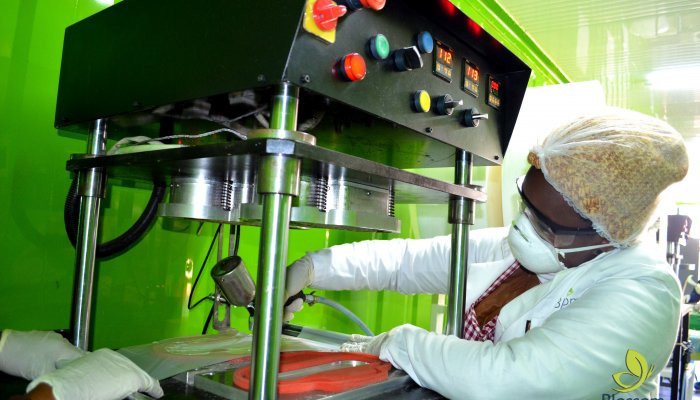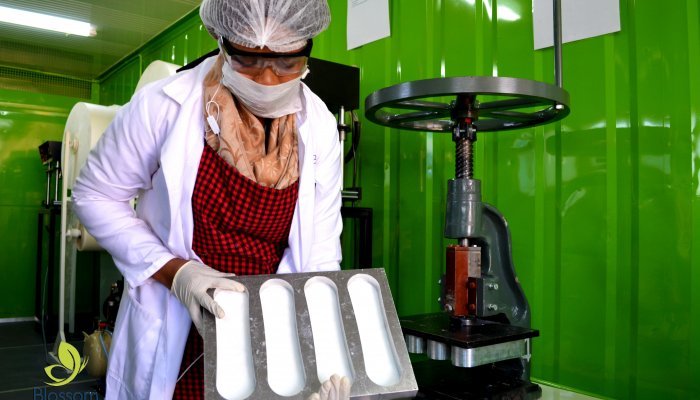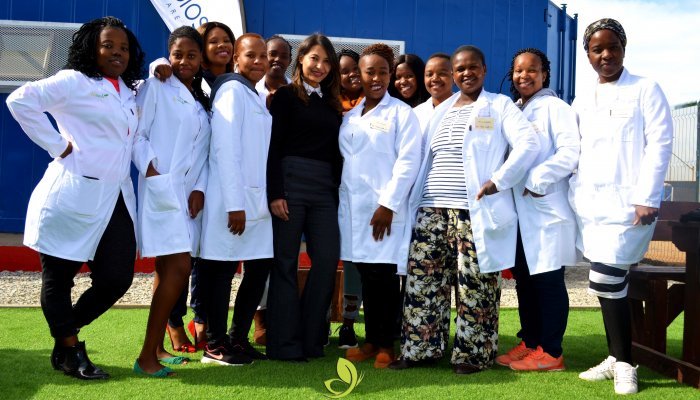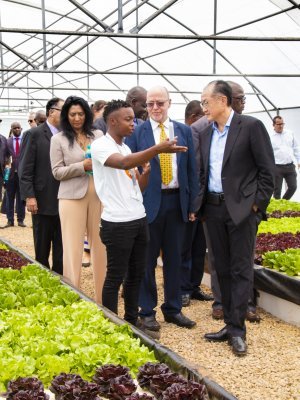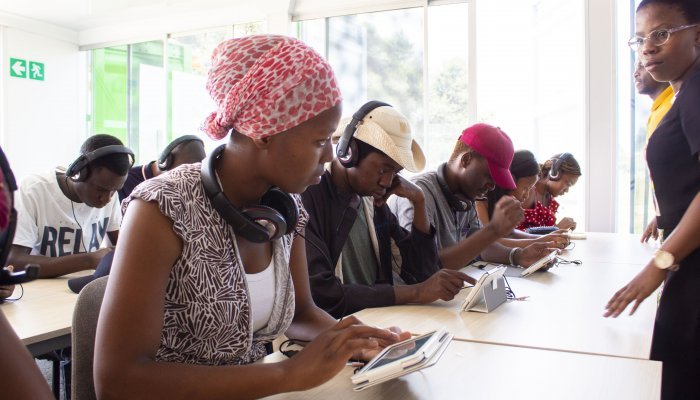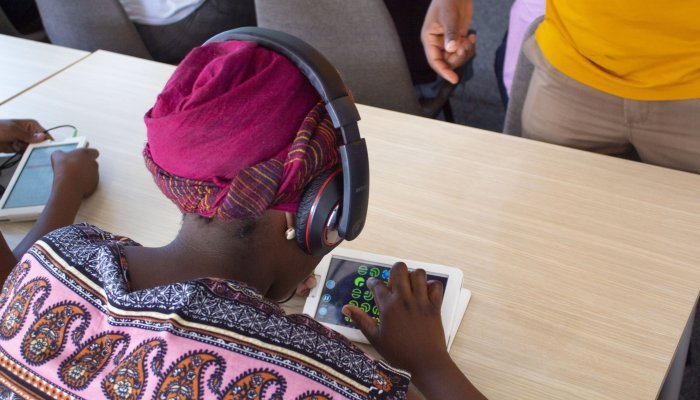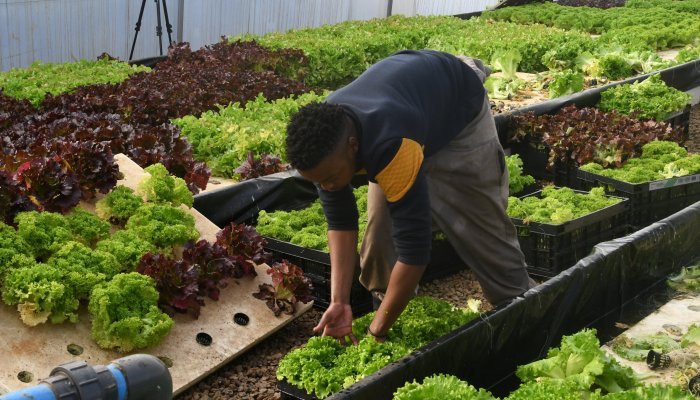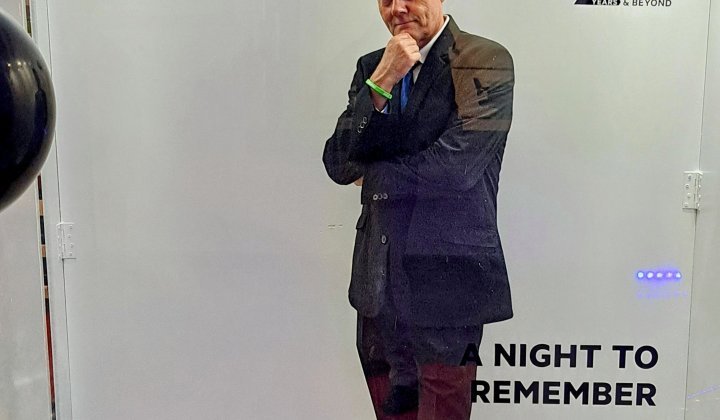There is a folk tale about a young Dutch boy called Peter who stops his village from flooding by sticking his finger in a dyke wall and valiantly holding back the sea. As the turbulent waters of youth unemployment threaten South Africa’s economic defences, employment initiatives like the Youth Employment Service are hoping to plug the hole.
In the face of South Africa’s high youth unemployment rate of 56.4% in the 15-24 age bracket, employment initiatives such as those offered by the likes of Nedbank, MTN, FNB, WDB Investment Holdings and the Youth Employment Service (YES) are all doing their bit to help one youngster at a time escape the scourge of joblessness. But, like Peter and his intrepid digit, can they achieve the seemingly impossible?
What sets YES apart is that this business-led collaboration between government, labour and civil society does not require its youth (defined as 18-35) to have a matric certificate or an undergraduate degree. This distinction enables YES to provide opportunities for the 56% of school-going South Africans who drop out before finishing Grade 12. While government is proposing a new General Education Certificate qualification aimed at giving these youngsters some sort of certification, Dr Tashmia Ismail-Saville, CEO of YES, points out that this won’t solve the problem for the millions who have already exited the education system.
“The problem is enormous,” Ismail-Saville told Acumen. “We still have seven to eight million youth in the country – a massive chunk of our youth population – for whom the school system hasn’t set a career trajectory. You do need an intervention to get these young people on some sort of working pathway.” That’s a big ask.
What has YES achieved to date?
It’s early days for the initiative, which became self-sustainable without any financial support from the government in March 2019, but as of August 2019, YES had secured “more than 350 corporate partners and over 19 000 jobs committed”, says Ismail-Saville. “Of those 19 000, there are already about 15 500 placed in their jobs. Some of the Investec jobs are already coming to an end of their first year. We’ve got over 26 companies that have already received their YES B-BBEE levels up.”
But, with the economy shrinking by 3.2% in the first quarter of 2019 and with business confidence declining in July, the question is whether YES can achieve the target set by President Cyril Ramaphosa to create one million new job opportunities for the youth over the next five years.
“If you look at a baseline of zero then 19 000 is a big, big number,” says Ismail-Saville. “But if you look at what the country needs and what its targets are, the goal is intimidating. But we have to get over comparing ourselves against idealistic outcomes and look instead at the nuts and bolts of where we are as a country. If you look at that number and understand that we are fully funded by the private sector, then in this space of time YES is the most impactful employment programme in the country, by a long way. Every work opportunity YES creates and every new income added to the national pot has massive multiplier effects. Already YES will inject R775 million into the economy via youth salaries.”
But there is a challenge. “This -3.2% [GDP figure] has set everyone back in terms of targets,” says Ismail-Saville. “I hope we can build a sense of commitment from investors and local businesses, and then we can start to get back on track with our targets.”
This means focusing on sectors and spaces that have legs (rather than industries, like mining, which are shedding jobs). “Places where the youth have future opportunities, rather than in an area where there are redundancies and where they are not competitive. Small business development will also be a big absorber for less-skilled youth labour.”
Opening up these opportunities, says Ismail-Saville, is about more than just job creation. It also has a notable, long-term psychological benefit for the YES alumni.
Long-term benefits
“This psychological effect is critical,” says Ismail-Saville, who explains that YES is putting considerable focus on the issue of behavioural mindsets: “There is some beautiful work being done by researchers, some at the World Bank with whom we work closely as technical partners, on the psychology of poverty and the mindset of poverty.”
Recognising the importance of addressing this mindset problem in young South Africans, YES supplies each youth placed with a smartphone so they can take part in a 25-module curriculum on soft skills and work readiness. “It’s graphic-rich, built with animation, stories and short movies we make, which are soapie-like stories about identifiable young people as they navigate the challenges of first-time employment,” explains Ismail-Saville. Information is delivered in bite-sized, digestible chunks.
Because the curriculum has been zero-rated for YES by Vodacom, youngsters can receive this information across the country, even the isolated rural communities where YES work opportunities are offered. YES, meanwhile, uses big data to harness the information and create a portfolio of evidence for each youth. “As they complete each module and assessment, we build them a CV. They can also upload their achievements to LinkedIn allowing them to build up a digital CV of consistency and credibility, and which makes them discoverable as a YES alum,” says Ismail-Saville.
Building communities
While this technology-enabled approach certainly helps to widen the reach and scope of the initiative – delivering the same level of help and information to a youngster in Gauteng and a rural youth in Mpumalanga – there is still place in the YES model for more face-to-face interventions, such as the Kago YES Hub in Tembisa and soon-to-be-launched hubs in Bushbuckridge, Alexandra and townships in the Western Cape and KwaZulu-Natal.
Recognising that job creation cannot be achieved in siloes, these hubs will create local economic zones to help develop entrepreneurial business, says Ismail-Saville. The Tembisa hub includes a micro-manufacturing sanitary pad facility which employs 12 local women. There is also an aquaponics farm where water from fish tanks feeds a channel of organic lettuce beds that are sold on to restaurants like the upmarket The Local Grill in Parktown North. “This is creating youth farmers in the townships, who are able to export products into the first economy,” says Ismail-Saville.
The hub also hosts digital skills training events which have been well received by the community, including Koketso Kevin Mmusi, who tweeted: “These are courses we never thought would exist in Tembisa.” And Yvonne Sibanyoni, who said: “I went to YES4Youth to register my information…I was invited for different programmes and workshops, and I took part in every workshop that they had.” She is now on the Blossom Care Solution’s team and is one of the 12 ladies funded by YES.
Vuyani Henry from the Western Cape describes YES as a great platform for the youth of South Africa: “There’s a song that says: ‘No matter where you are going, it starts from where you are’. This is the opportunity for all youth in South Africa. Don’t take this opportunity for granted.”
There is no shortage of young South Africans like Sibanyoni and Henry who are in need of this intervention, says Ismail-Saville. Now the aim is to get more companies to commit. “We are encouraging companies to come forward and open the jobs on our portal,” she says. “This is a collective effort; we will not create jobs if we do not get broad-based buy-in on the private sector side. We say creating jobs should be everyone’s business.”
It’s all about jobs and holding back the tide of unemployment one youth at a time.
SIDEBAR
What is YES?
The Youth Employment Service (YES) has effectively been up and running since January 2019 with legislation from the Department of Trade and Industry (DTI) having been finalised in November 2018 that rewards companies for investments in youth employment. YES is being driven by a collaborative ambition to “build new spaces, new places, new pathways for our youth to transition into the economy”, explains Dr Tashmia Ismail-Saville, CEO of YES.
YES works in partnership with youth accelerator initiatives like the Click Foundation, Youth@Work, Bright Ideas, ORT and Harambee, as well as big and small companies across South Africa. “It’s about galvanising and catalysing business from big all the way down to little SMMEs to take young people on, give them that entry point, that first chance into economic participation,” explains Ismail-Saville.
For companies, the process starts by registering with YES, then committing to a YES target of creating 12-month work experiences in the 18-35 age bracket for black youths.
As a way of sweetening the deal, supporting the initiative also comes with a B-BBEE benefit, which is gauged depending on the size of the business. Registering companies decide if they fall into the big business (over R50 million turnover generic entity) or small category (under R50 million turnover QSE). Companies wanting to qualify for the DTI’s B-BBEE benefits select the YES placement package applicable to them, which determines how many positions they need to create to benefit from the incentive. These openings can be created inside the company or as external placements. Explains Ismail-Saville: “If a company has a target of 500 they can place 100 inside their company, and 400 in a range of hosts as part of the implementation partner model, where YES will deliver, via community-based partners, a turnkey solution to contract and place youth in community-based jobs on your behalf.”
While not all companies choose to get involved for the B-BBEE benefits, says Ismail-Saville, the likes of Johnson & Johnson and Oracle were able to move up “not just one but two levels on their B-BBEE scorecard”, courtesy of a community healthcare initiative – Project Nomzamo – and another project by Bright Ideas to create agripreneur jobs in rural KwaZulu-Natal. The case of Johnson & Johnson, says Ismail-Saville, was a great example of “strategically lining up primary healthcare jobs in the market with the business”.
Other youth employment incentives for business include YES encouraging uptake of National Treasury’s Employment Tax Incentive which “gives a business R1 000 back if the youth salary is under R6 000, so it subsidises the cost of the job”, says Ismail-Saville.
But it’s the long-term benefit of participating in this year-long employment drive which has the greatest returns to society. By de-risking these youth through a work experience, YES makes it easier for the next employer to take them on. “What gives youth a springboard is a CV and a reference letter and proof that they were able to work and deliver for a period of time,” says Ismail-Saville, referencing a 2017 economic working paper from the University of Stellenbosch and the Bureau for Economic Research which found that using a reference letter in an application “increases call-backs by 61%” and, in the case of women, doubles their chances of securing a job over a three-month job search period.
KEY TAKEAWAYS
· The Youth Employment Service (YES) effectively began operating in January 2019 and, eight months later, had signed up more than 300 corporate partners and is close to 19 000 new work opportunities committed by business.
· By using B-BBEE benefits, strategic placements and the Employment Tax Incentive as sweeteners, YES is working to entice big and small corporates in South Africa to come on board by committing to create 12-month work experiences for unemployed youth.
· YES uses digital technology, platforms and partnerships in an effort to undo the damaging structural, physical and psychological consequences of unemployment and poverty.



